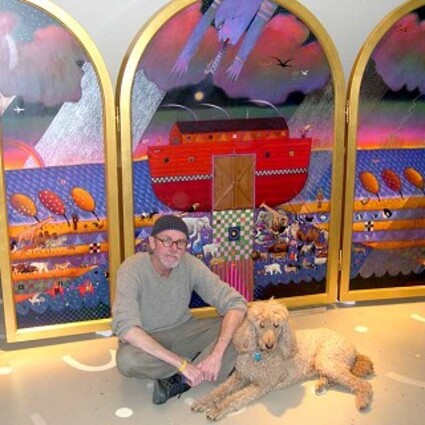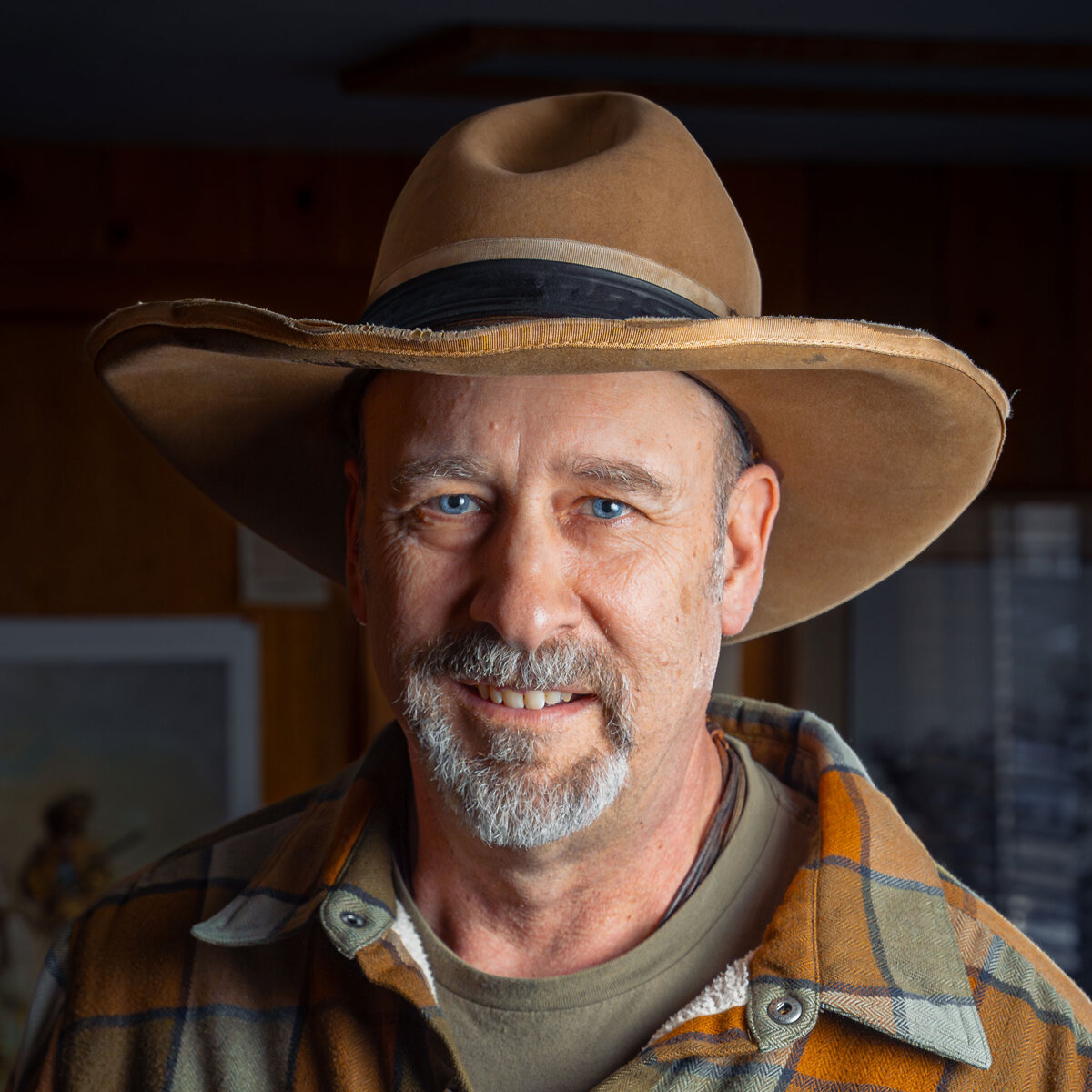Sisters artist completes 20-year odyssey
Last updated 5/10/2011 at Noon

Jim Cornelius
John Simpkins says his triptych — 20 years in the making — offers a message of hope to humanity.
It started with a dream and became a 20-year journey - temporal, artistic and spiritual - for Sisters artist Jon Simpkins.
Last week, Simpkins announced the completion of a magnificent triptych painting that will go into the George R. Stroemple Collection. Stroemple, who resides part-time in the Sisters Country, has been a longtime patron of Simpkins' art.
The journey began in Napa, California. Simpkins' partner Victor Brumbach had a vivid dream featuring a triptych that presented a stark choice for humanity: engagement with the world and survival or disengagement and destruction.
"My partner Victor had a very powerful dream and he was driven after that to write all this stuff down," Simpkins recalled.
Brumbach's vision for the painting struck a fundamental artistic chord, one that is recognized but not well understood.
"He's describing essentially this sacred geometry (used in the building of cathedrals, etc.)," Simpkins said. "It does something to us; why, I don't know."
Simpkins presented the idea for the painting to his patron, Stroemple.
"George loved it and gave us the go-ahead," Simpkins said.
Little did the artist know how challenging it would be to bring the vision to life. The challenges began immediately.
Stroemple had the panels made in Portland and shipped to Simpkins' Camp Sherman studio.
"When it arrived, my heart sank, because all the panels were permanently installed in the frame," Simpkins said.
That presented challenges for the painting and created a basic logistical problem: the large work had to be treated as one unit.
Simpkins prepared the panels for gold leafing and painting, using methods that date back to the medieval period, and began to block in the painting. But crisis intervened. Victor was sick with AIDS and his condition began to deteriorate.
"I did what I could on this, but my attention was drawn to Victor," Simpkins said. "I became his full-time caregiver until he died in 1995."
Wrestling with profound sadness, it was a while before Simpkins could work on the triptych.
"I didn't want to harm this painting by putting dark sadness into it," he said. "I just covered it with a sheet."
The sadness is reflected in the painting, in the form of silver-leaf rain that denotes grief, yet with a strange beauty.
Simpkins worked in fits and starts on the project. In 1996, he had a vivid dream in which he saw the Twin Towers of the World Trade Center struck by a bolt of lighting. That was depicted in the painting, more than five years before the terrorist attacks that brought the towers down. The eerie presentiment came home on September 11, 2001. When Simpkins saw the images of the towers on TV, "I felt really nauseous," he recalled.
"I knew they were going to be struck by something really powerful," he said. "I didn't know it would be a plane."
Simpkins moved seven times during the period of the painting's creation. Each time, the triptych had to come with him. It was after wildfire drove him from his abode on Peterson Ridge last year that Simpkins determined that he must finish the painting.
"I thought, 'This is it. I'm not going to move this again,'" the artist said.
He came full circle, returning to the studio in Camp Sherman where he had first put brush to the panels.
Nancy and David Stern invited him to finish the work in the studio on their property.
"They've been beyond gracious and generous," he said. "This is the room to finish it in. This is the room it started in and it's right to finish it here."
Through the long journey, "the painting has always told me what to do."
While the 24-carat gold leaf exterior of the panels depicts drowning souls, the interior centers around an ark and brightly colored animals.
"Hope is the overall thing," Simpkins said. "It's hopeful. There's a lot of fear in the world right now, it seems to me. It's a wish; it's almost a chant about mindfulness. If we're mindful and respect all life forms - not just homo sapiens - if we treat all life forms equally... there is hope. There is great hope."
The completion of a work that has accompanied the artist across two decades of joy and sorrow and across the landscape of the Sisters Country clearly marks a transition for Simpkins. As the painting moves out, he must, too, and he as yet has not found a new place to live and paint.
The departure of the painting that taught the artist so much loomed large, yet Simpkins did not mourn.
"It's like my dear friend," he said. "However, I think it has work to do. A painting needs to be seen, you know. I think this painting has something to say to people.
"It's a good time. It feels right now... It has become now, and now it's time to say goodbye."


















Reader Comments(0)